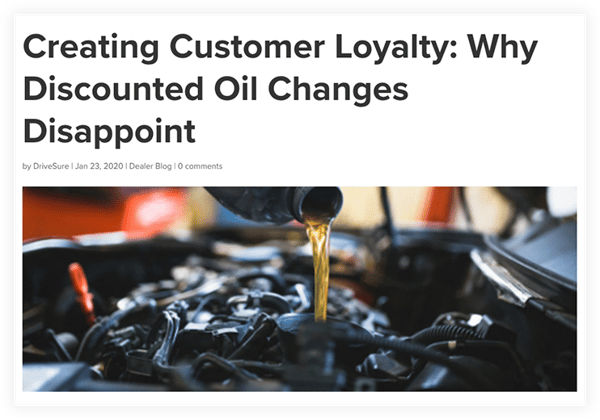Sales Pipeline Radio, Episode 317: Q & A with Jamie Anderson @collsdad

By Matt Heinz, President of Heinz Marketing
If you’re not already subscribed to Sales Pipeline Radio, or listening live every Thursday at 11:30 a.m Pacific on LinkedIn (also on demand) you can find the transcription and recording here on the blog every Monday morning. The show is less than 30 minutes, fast-paced and full of actionable advice, best practices and more for B2B sales & marketing professionals.
We cover a wide range of topics, with a focus on sales development and inside sales priorities. You can subscribe right at Sales Pipeline Radio and/or listen to full recordings of past shows everywhere you listen to podcasts! Spotify, iTunes, Blubrry, Google Play, iHeartRADIO, Stitcher and now on Amazon music. You can even ask Siri, Alexa and Google!
This week’s show is entitled, “How CROs Can Flip the Relationship with Finance“ and my guest is Jamie Anderson, at Chief Revenue Officer at Xactly.
Tune in to hear more about how to navigate the relationship between CROs and CFOs while learning about:
- the metrics you need to prioritize to promote productivity
- how Xactly helps businesses as a data driven company
- how to align aggressive yet innovative strategies between finance and marketing
- key traits to posses when transitioning from a marketing role into a revenue role
Listen in now for this and MORE, watch the video or read the transcript below:
Matt: All right. Welcome everyone to another episode of Sales Pipeline Radio. I’m your host, Matt Heinz. Thank you so much for joining us on another Thursday morning or afternoon or in our guest case today, maybe even early evening, depending on where you’re joining in from. If you’re joining us live, I’m very excited to have you here. Thank you for listening, thank you for watching.
The advantage of joining us on live for Sales Pipeline Radio is you can be part of the show. If you have a question for our guests today, if you have a comment, feel free to put that into the LinkedIn comments, and we might make you part of the show and give you a little shout out and bring your comment into the program as well. So thank you very much for doing that. If you are listening or watching on demand, thank you very much for subscribing, for downloading. I think we’re somewhere around episode 330 of Sales Pipeline Radio, over the past several years. Every episode, past, present and future, you can always find at salespipelineradio.com. Every week, as you know, we are featuring some of the best and brightest minds in sales and marketing, B2B specifically. Very excited to with us today, direct and live from Scotland, Jamie Anderson is the Chief Revenue Officer at Xactly. Jamie, thanks very much for hanging out with us today.
Jamie: Listen, I’m absolutely delighted to hang out, Matt. I don’t know whether you know this, but you’re a bit of a legend, right? You know-
Matt: What?
Jamie: Yeah, you’re a legend, 47,000 followers on LinkedIn and 91,000 on Twitter. Listen, I was a humble CMO once that used to lap up your content. Let me tell, you’re a legend.
Matt: Oh my goodness. Thank you. I don’t always feel like a legend when I’m sitting here in my basement, by typical, three kids in basement, in dogs basement, but I’ll take what I can get. Thank you. I think what is really interesting is if you can give some of your background, because you said, you’ve had a varied career: SAP, Marketo. You do a lot of advising with companies in go-to-markets scale up stages but what interested in me a lot was this relationship with the CRO and the CFO, which quite frankly like, we have an audience that is sales and marketing in particular, the better relationship you have with the CFO, the better off you can be. So maybe just, let’s start with a little bit about you, little bit about Xactly, and then why that relationship you think is so important?
Jamie: Let me start with Xactly. There may be people tuning in that don’t know who Xactly are but Xactly has been around. It was formed in 2005 by Chris Cabrera who at the time of this vision to create the world’s first SaaS incentive compensation management platform. He did that very successfully, sensor inception, Salesforce have been a huge customer and partner to the business. Here we are 16, 17 years later, we’ve gone through ICM, we’ve gone into sales performance management and now we’re kind of, it’s really interesting. We’re talking about the CFO and things like that, but we’re really forging into this space that we are defining as intelligent revenue because it is all about revenue. It’s all about the fact that no $2 are created equal. It’s that combination of you mentioned data. Data is a huge component of it. It’s how we use that to drive scalability and performance and predictability into some of the world’s biggest companies.
Matt: You use the phrase sort of flipping the relationship specifically, between the CRO and the CFO. What does that mean in terms of where the relationship was? Why was that not successful or not sustainable? What about that flip is helping organizations increase health and momentum and success?
Jamie: Well, actually let me give you a little analogy as well on that, because remember, marketers and sellers were not always the best of friends either. It was always the like, ‘What have you done for me lately in terms of leads’ and all that type of stuff was the common thing I used to hear from CROs when I was a CMO myself, the thing that solved it though, Matt, what was it the thing that solved it? Visibility into data, sharing a common view of a data set. Now that’s what’s happening in the relationship between the CRO and the CMO.
It’s all about data. I think traditionally finance is driven almost entirely planning and business, which even goes into go to market planning, but we’ve not always been looking at the same set of data. Finance has their data. There’s a lot of assumptions based on data. How long does it take a rep to ramp? What is the average deal size? If we launch new products, what’s the fastest time to market for these products? How many salespeople are successful, typically? What makes a good successful sales rep? The thing is over 17 years, Matt, we’ve built that data out, that data exists anonymized in our platform. We know what good looks like. When you make assumptions and you’re not using real data and you’re not using the same data sets. Then that’s when things go wrong.
What’s happening is people pour into this data. I was talking on like a podcast yesterday: the reality is that the CRO role is a data driven role, just like the CFO. What we’re able to do is, as I said, look at the same sets of data and come together on what is the right path forward. How many reps do we need? Is it a big enough addressable market in this territory? I kind of sometimes describe it as what you need. You need to be able to plan effectively that’s number one, so you need the data from that planning, you’re able to put inside the right performance metrics, the things that actually are going to be successful, that you’re measuring consistently. When you do that, you’ve created a predictability in your business. Those three things are really, really important and that’s what we help companies do.
Matt: There’s a lot that we can unpack here and go into, I think you talk about shared data and I think it’s important to point out the difference between transparency of data and shared metrics. You think about what comes from marketing and for too long, marketers have defined their own metrics and acronyms, we talk about MQLs and SQLs and the CFO doesn’t care about any of that. The head of sales may not care about any of that either. Instead of inventing our own language, it’s one thing to say, here’s my data. It’s another thing to say, like, ‘Hey CFO, what data do you care the most about and how do I start my metrics there and talk about impact metrics and if I need to work my way back to operational metrics?’ If I’m thinking about marketing sales and then sales and revenue, to your point earlier about not just closed one but lifetime value. What’s on that combined dashboard that all those teams should be looking at all the way back to marketing as well?
Jamie: If you look at overall rep productivity, and you look at rep productivity in each of the segments you go to market, and now most businesses, whether they’re software or SaaS based businesses, whether they’re manufacturers professional services, it doesn’t matter. You are looking at your market, maybe through the lens. First of all of your small, medium business, your commercial general business segment, and then your enterprise business, no two reps are the same. When you’re doing your sales plan and you look at okay, the velocity of business in each of those areas of sales, you’re looking at the productivity of the reps. Now, one of the really important things to establish is what is the optimal productivity, because that’s what your top performers are hitting. Once you understand that and the kind of bell curve of you’ve got people that are maybe in the 30 to 40% attainment, then you’ve got this group that are in the 80% attainment.
Then you’ve got this other group, it kind of tails off into a 100, 100 plus. What do their metrics look like in terms of their deal cycles, average time to close? You start to get really granular about the measurement and then you can start to model and say, Well, do you know what? If we could increase the time to first deal for new starters, for example: you look at how long the new rep ramp time is. One of the things we measure when we started doing this together with finance, we found that new reps in commercial for example, were taking about 140 days to their first deal. That’s crazy. Why is that? Then it was a combination of multiple things like enablement for example, or what I call global sales productivity, but making sure that you’re coaching consistently, it’s not a one and done thing.
I mean, I could go off in a tangent here. I’ll try not to because we’re short in time, but you need to continually coach. You’re looking at all those coachable moments. Well, anyway, what we did is we reduced that from like 141 days to 72 days. Within your first quarter of productivity, you’re going to hit your first deal. These are metrics that really move the needle. The reason I’m saying that is that when finance then start to plan. When they’re looking at the next year out, which we always inevitably are, they’re saying, well actually, if this is a new norm, what does it mean in terms of a hiring schedule? So many, do we hiring Q1, Q2, then what’s the ultimate impact of that hiring based on how quickly these reps become productive. That is a partnership because finance could measure those things, but if we’re not measuring and managing the outcomes together and the investment it takes to drive that higher productivity, then of course, these are just metrics that you’re measuring, but we’re no focus on.
Matt: Yeah. Talking today on Sales Pipeline Radio with the Chief Revenue Officer at Xactly, Jamie Anderson, also singer songwriter. I’m tempted. I know we’re going to run out of time so I’m probably not going to get into big Wednesday in this session, maybe the next one, but I’m fascinated by, what you guys are doing and Xactly is super interesting as part of this conversation. Because if you think about that relationship with the CFO, I think about sales thinking about closed one deals and what do I have to do to get closed one and marketing, thinking about pipeline contribution. It can be hard sometimes to be able to so combine those together to say, what’s my actual customer acquisition cost? What am I willing to spend based on an expected lifetime value and knowing which different types of customers offer different types of longevity and profitability, instead of thinking bottoms down like, oh, how many emails do I send and how many BDRs do bottoms up and say, what am I willing to spend to acquire a customer?
I think there’s a lot of CFOs that we work with that when we say like, ‘What are you willing to spend?’ Obviously that’s going to be ceiling. We want to go lower than that, but what are you willing to spend overall to acquire a customer? Where are we willing to go higher in terms of quarterly incentives or marketing programs. Based on an overall look, most companies don’t have that visibility, let alone are thinking about that. How do you encourage companies to create that consistent view and have that bottoms up look that quite frankly allows you to be more aggressive and innovative to hit your number?
Jamie: Well, there’s a couple aspects of this. I think one of the things is the data gives you enormous focus. One, for a technology company being around any company that’s innovating, there are wash with ideas. I think that the most important thing you do is you try and bring focus to that. Again, you analyze the markets you’re going into because you can’t win on every single front. You need to create an incredible focus, know where the ideal customer profile, know where that lies, what we’re marketing to make sure your message resonates with that audience. I think that, one of the things that we brought, one of the innovations we brought out recently, which listening to our customers was this notion of commission expense forecasting.
Forecasting’s a big thing in itself, that’s what I live or die by ultimately know is the forecast, but forecasting with a high degree of accuracy, what your commission exposure is means really integrating and getting granular in the data. Every rep is at a different stage of the plan, based on any quarter. For example, you could have a rep in Q2, that’s already hit the plan that in accelerators. You can’t just blanket an estimate things like a commission forecast based on, well, that’s $1 million deal so we would pay out X. We can get really granular.
We can go into every single rep and produce an outcome based on the forecast, based on where something’s in forecast or whether it’s upside. You can predict with a degree of certainty what the commission earnings is per deal. Per rep. For finance, again, the relationship between the CRO and the Chief Financial Officer, that visibility gives us a credibility when it comes to providing them information, which again, can help someone not mess the commission earnings forecast by several million, which does actually happen and has a material impact on a public company.
Matt: Yeah. Well, and I think that level of visibility also it unlocks a level of creativity and innovation across the sales and marketing teams to not only ensure their sales teams are successful, to make sure your reps are earning out what they deserve and what they’re earning, but doing that in alignment with where the organization needs to go and close business as well. Super exciting stuff. I know we are going to run out of time here, but I wanted to ask you about the CRO role in particular. Most CROs we see (Chief Revenue Officers), I would say at least eight out of 10, come up through the sales organization. They are heads of sales, VPs of sales who get the CRO and CROs typically own sales and marketing.
We see fewer CROs come up as marketing leaders and then get that role. What have you learned by sort of having that seat? you’ve played roles in sales and marketing throughout your career. What do you see the most successful CMOs to CROs look like? What should they be thinking about as they move into that CLO role? Perhaps also for CMOs that aspire to that role, what are things they should be thinking about right now to prepare themselves?
Jamie: I think first of all, be incredibly data and insights focused. I was a CMO for three years and II ran my team pretty meticulously by understanding what sales needed, what sales needed from a market organization across marketing and demand gen. I had a very, very strong handle on a process that I tend to call demand to revenue. The demand captured in the market and how that flows through every element of that. You mentioned MQLs for example, but every element of that through the whole phase, I think having understanding of that, because that really talks to the long term viability of your revenue organization. I think having a little bit of humility, a lot of empathy, because you’re dealing with a lot of big characters as well. I think that is it that’s really important. We could have a whole show on that, but in summary I’d say be detail oriented and be curious, there’s always new things. There’s always new ideas, encourage ideas, that’s a key thing.
Matt: I love that answer. Thank you for that. I think there’s culture change that abounds in this entire conversation. Whether you are changing your work card to be more impact driven, aligning with metrics that a CFO cares about that you as a sales leader, as a market leader may not be as familiar or comfortable with whether you are a marketing leader taking over a broader role or a sales leader, taking over a broader role, being willing to admit what you don’t know to be vulnerable and curious and to lean in on that together.
Jamie: Yeah. Honestly, I do that on a daily basis and I’m blessed that, I’m surround by people who individually are better at their job functionally than I am at any of other jobs.
Matt: Well, sign up a good leader when you’re willing to lean in on people that are smarter than you and surrounding yourself with that. It just makes you a better leader makes you more successful. Jamie Anderson, Chief Revenue Officer at Xactly Corp. Thank you so much for joining us today would love you. Have it on next time. Bring your guitar next time so we can further entertain the audience. But this has been phenomenal. Thank you so much for sharing today.
Jamie: No problem. Thank you. Take care.
Matt: Thank you everyone for watching and listening. Appreciate you all being here. We’ll be here again next week. 11:30 Pacific, 2:30 Eastern whatever time it is in Scotland right now. My name is Matt Heinz. Thanks everyone for joining us. Another episode of Sales Pipeline Radio. Take care.
Listen to the Latest Episodes:
 I interview the best and brightest minds in sales and Marketing. If you would like to be a guest on Sales Pipeline Radio send an email to [email protected]. For sponsorship opportunities, contact [email protected]
I interview the best and brightest minds in sales and Marketing. If you would like to be a guest on Sales Pipeline Radio send an email to [email protected]. For sponsorship opportunities, contact [email protected]








